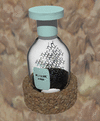issue contents
April 2023 issue

Cover illustration: A combination of solid state, solution, and computational studies are employed to best describe the various possible tautomers of succinimidine and glutarimidine species and the corresponding hydrolyzed imino–imide compounds. See Aristov, Geng, Harris & Berry [Acta Cryst. (2023), C79, 133–141].
Halogen, chalcogen, pnictogen and tetrel bonds


 access
accessresearch papers


 access
access



 access
access






 journal menu
journal menu
























